Crafting Distinct Animated Visual Styles
Crafting an effective Animated Storytelling Ad Video demands attention to details extending beyond initial concepts. They focus on practical elements that guide viewers toward desired actions and measure the true impact of their creative efforts. This involves refining various aspects of the ad itself and how its performance is analyzed, ensuring every visual choice and narrative beat serves a larger purpose. Optimization strategies are key.
They prioritize making the viewer journey seamless from watching to acting. Clear, compelling direction guides prospects on what steps to take next. Instead of vague prompts, they employ clear calls to action that are specific and aligned with the video's objective and the viewer's place in their decision process.
Measuring success goes deeper than simple view counts. They track tangible results generated by the content. Understanding viewer behavior through analytics provides crucial insights into what resonates. Analyzing engagement patterns helps pinpoint areas for improvement, ensuring the Animated Storytelling Ad performs optimally across platforms.
- They use action-oriented text like "Start Your Free Trial" or "Request a Demo," making the next step obvious.
- Incorporating real-world scenarios and demonstrating product use in context makes the message relatable and believable for the audience.
- Utilizing tools like heatmaps reveals exactly which parts hold attention or cause drop-offs, informing future edits or content strategies.
- Incorporating social proof builds credibility, while A/B testing different versions helps refine elements like thumbnails or script points for maximum impact across diverse viewing environments.
Mastering these practical considerations allows creators to maximize impact and demonstrate tangible value from their animated campaigns.
Building a Strong Animated Storytelling Narrative Arc
Crafting an effective animated narrative arc is essential for captivating viewers and achieving campaign goals. They build these arcs by first establishing a relatable scenario, outlining a challenge or aspiration familiar to the target audience. The story then progresses to introduce a solution, demonstrating precisely how it addresses the initial problem or helps achieve the desired outcome. For a storytelling explainer video, this structure is fundamental, guiding potential customers seamlessly from recognizing a need to seeing the product as the clear answer. Demonstrating features within relevant, real-world contexts makes the offering tangible and believable, illustrating its seamless integration into existing workflows or capacity to solve specific industry challenges faced daily. Incorporating social proof, such as brief flashes of recognizable company logos that use the product or mentioning impressive user statistics, quickly builds credibility and viewer trust.
A well-constructed arc leads to a satisfying resolution where the value proposition is not just stated, but clearly shown through the positive story outcome. They end with a decisive call to action designed to prompt the next step. Moving beyond generic prompts like "Learn More," they opt for specific, action-oriented language such as "Start Your Free Trial," "Request a Demo," or "Download the Report." These tailored calls are effective, aligning with video objective and viewer journey. Measuring success, or return on investment, involves tracking production investment against tangible value generated. This includes observing increased qualified leads, a reduction in sales cycle length because prospects are better informed, or even a decrease in support ticket volume from users gaining clarity from the animation. Analyzing viewer behavior through tools like heatmaps reveals precise engagement points, showing segments that hold attention, are rewatched, or lead to drop-offs.
This granular data is invaluable for refining the narrative and presentation. They use insights from analysis to optimize content flow and structure. Conducting A/B testing on different animated ad elements – from the thumbnail image to the first crucial ten seconds, the call to action wording, or even script variations – yields significant data on what resonates and drives higher conversion rates. Crafting a strong narrative arc is equally vital whether producing a dynamic 2D animated story video designed for social reach or a more detailed animation embedded on a product page; compelling story power is universal.
- A clear, specific call to action is vital, using action-oriented text tailored to the objective.
- Measure ROI by tracking costs versus value generated, like increased qualified leads or shorter sales cycles.
- Use real-world scenarios and relevant contexts to make product demonstrations relatable and valuable.
- Incorporate social proof elements, such as company logos or user statistics, to build trust and credibility.
Optimizing the animated narrative for different platforms requires adapting delivery, considering viewer intent and typical viewing environments to ensure the message connects effectively wherever encountered.
Impact of Animated Character Design Choices
Character design profoundly shapes how audiences connect with animated advertising. Their visual appearance, personality conveyed through animation, and how they interact within the story environment dictate much of the emotional response. Viewers often form connections with well-crafted characters, seeing aspects of themselves or aspirational traits reflected. This initial rapport is crucial; it transcends mere observation, inviting them into the narrative journey in a personal way.
The choices made in designing these characters directly impact the clarity and effectiveness of demonstrating solutions. Showing a character confidently using a product in a relatable scenario makes its benefits tangible. Their reactions to a problem or successful outcome mirror potential viewer experiences, making the advertised solution feel less like a pitch and more like a helpful discovery. This visual guidance through a transformation journey, led by a character, reinforces the solution's natural fit.
Measuring the success of animated ads involves more than just view counts; it includes analyzing how character design influences tangible results. Tracking viewer behavior through attention maps reveals whether characters hold interest during key product demonstrations or benefit explanations. Different character styles and interactions can be A/B tested to see which leads to higher engagement or ultimately stronger conversion rates. Clear and specific calls to action, potentially delivered by or associated with a character, perform better than generic prompts, guiding motivated viewers directly to the next step. Incorporating characters alongside social proof, perhaps showing them within familiar industry settings or interacting with elements signifying satisfied users, builds swift credibility.
- Matching character style to target audience demographics and platform viewing habits ensures initial attention grab.
- Characters provide unique flexibility for showcasing complex features or processes within a controlled environment.
- Consistency in character portrayal across different videos helps build a recognizable Animated Brand Story.
- Analyzing the cost versus lead quality or reduced support queries linked to character-focused videos demonstrates their tangible return on investment.
Ultimately, intentional character design transforms an animated ad from a simple explanation into a resonant experience, fostering connection and driving desired actions.
How Animated Ads Evoke Viewer Emotion
Animated narratives possess unique power to forge immediate emotional bonds with viewers. Through vibrant visuals and compelling sound design, they bypass conscious filtering, tapping directly into feeling. Visual storytelling creates empathy, allowing audiences to connect with characters or scenarios on a deeper level than static mediums might allow.
Building trust means showing solutions feel real and relevant. Presenting products within everyday challenges or industry workflows makes them tangible. They might demonstrate a complex process using an animated cartoon ad, breaking it down into easily digestible steps viewers connect with instantly. Integrating social proof, like displaying recognizable company logos or user statistics, swiftly validates value, building credibility through association and shared positive experiences.
After connecting emotionally, campaigns must guide viewers forward. Generic prompts prove less effective; clear, action-oriented language compels the desired next step. Commands such as "Start Your Free Trial" or "Request a Demo" provide specific direction, leveraging the emotional engagement built to motivate viewers toward conversion goals relevant to their journey phase.
- Analyze viewer interactions using heatmaps and attention tracking. They pinpoint moments viewers rewatch or skip, revealing what truly holds attention or causes confusion within the narrative flow.
- Systematically test different video elements. Experimentation with initial visuals, script variations, or calls to action reveals subtle changes that resonate more deeply or drive higher desired outcomes.
- Optimize content for diverse viewing environments. Social feeds require immediate impact, often understandable without sound using text overlays, unlike more detailed videos suitable for product pages assuming higher viewer intent.
- Evaluate success by comparing production costs against generated value. Measuring ROI involves tracking tangible outcomes like increased qualified leads, reduced support inquiries from better-informed users, or faster sales cycles. Metrics from an animated case study video can demonstrate how effectively the emotional narrative translated into tangible business results for others.
Combining emotional depth, clear calls to action, and rigorous optimization transforms animated ads into powerful tools driving both connection and measurable outcomes for campaigns.
Expressing Brand Personality Through Animation
Expressing brand personality through animation offers a dynamic pathway connecting with audiences on a deeper level. They leverage animation's versatility to translate core values and voice into engaging visual stories. This goes beyond aesthetic; it involves strategic decisions ensuring the animation serves overarching marketing objectives effectively guiding viewers toward desired actions. Brands showcase their commitment to customer understanding often through an animated explainer video, simplifying complex offerings while embodying a helpful, approachable persona.
Demonstrating value means showing product capabilities; brands use an animated feature spotlight to highlight key functions effectively, illustrating utility within relatable contexts. Measuring the true impact involves looking past simple view counts.
- Tracking production costs against generated value reveals tangible return.
- Analyzing viewer behavior using tools like heatmaps identifies compelling or confusing segments, allowing for precise refinement.
- Incorporating social proof visually within the animation builds immediate credibility and trust with the audience.
- Rigorous A/B testing of different animated elements, from thumbnail to call-to-action wording, optimizes performance significantly across platforms.
By aligning animation style with identity and employing data-driven strategies, brands build trust and drive conversions effectively.
Using Animated Visual Metaphors Effectively
Beyond crafting captivating visuals, animated storytelling videos require strategic execution achieve tangible results. Creators understand effective animated content demands measurable impact, moving beyond simply visualizing abstract ideas. Demonstrating the value animation generates proves crucial; video investment justifies through metrics like increased qualified leads, reduced sales cycle length better-informed prospects, decreased support ticket volume users understand features clearly. Measuring the ROI involves tracking production costs against these concrete outcomes.
They prioritize clear and specific calls action propelling viewers forward. Avoiding generic prompts like "Learn More," they employ action-oriented text such as "Start Your Free Trial" or "Request a Demo." These calls must align video's specific objective where viewer stands their journey. An Animated Motion Graphics Ad often requires immediate, concise direction.
Analyzing viewer behavior offers invaluable insight refining animated experiences. Tools providing heatmaps and attention tracking reveal segments viewers watch intently or skip, pinpointing confusing areas or points interest wanes. Incorporating social proof quickly builds credibility trust. Showing recognizable company logos using product or statistics about satisfied users reinforces value. Demonstrating features within relatable scenarios, showing product integrates existing workflows, solves industry-world problems increases perceived value, especially for viewers considering solutions like an Animated Onboarding Video.
Continuous improvement stems from rigorous testing. A/B testing different video components thumbnail images, initial seconds content, CTA placement wording, or script variations provides significant data what resonates. Optimizing content various platforms means considering viewer intent viewing environment. Social media needs attention-grabbing visuals, potential understanding without sound text overlays, shorter durations. Product pages accommodate slightly longer, detailed content assuming higher viewer intent.
- Utilize specific action-oriented text for calls action.
- Analyze viewer heatmaps identify engagement patterns.
- Integrate client logos user statistics social proof.
- A/B test key video elements optimize conversions.
Ultimately, success lies combining creative animated storytelling power with strategic execution focus maximizing measurable performance connecting with audiences contextually.
Simplifying Complex Ideas Via Animation
Animation holds power simplifying even most complex concepts. Rather than dense text or static diagrams, animated visuals guide viewers through intricate processes or abstract ideas with ease. This clarity helps audiences grasp value propositions quickly.
Driving desired actions requires more than just clear explanation. Specific, action-oriented text on calls to action proves far more effective than generic prompts. Think "Start Your Free Trial" or "Download the Report," tailored precisely viewer's journey stage and video's objective. Proving animation's business impact involves tracking production costs against generated value. This value appears increased qualified leads, faster sales cycles due better informed prospects, or reduced support tickets from users understanding features better.
Using real world scenarios makes solutions deeply relatable. Showing product features operating within relevant industry contexts or integrating existing workflows dramatically increases perceived value. Analyzing viewer behavior through heatmaps or attention tracking tools reveals exactly which video parts resonate or confuse. Incorporating social proof like recognizable company logos or user statistics builds credibility swiftly. An Animated Process Explanation benefits immensely from these clear visuals and targeted calls, ensuring viewers understand steps and next actions. Similarly, an Animated Pitch Deck Video transforms complex proposals into compelling, easy-to-follow narratives, increasing engagement and comprehension for key stakeholders.
- A/B testing different elements like thumbnail image, initial seconds content, CTA wording, or script variations yields critical insights audience resonance.
- Optimizing for different platforms considers viewer intent, viewing environment.
- Social media videos need instant attention, potentially functioning without sound text overlays, shorter format.
- Videos embedded product pages assume higher viewer intent, allowing slightly longer, more detailed content.
Strategic implementation measuring animation's reach ensures not only comprehension but tangible business results.
Mastering Humor in Animated Ad Storytelling
Humor proves a powerful tool in animated advertising, capable of instantly grabbing attention in crowded digital spaces. When done well, it forges an emotional connection, fostering brand warmth and making messages memorable. Relatability in humorous scenarios deepens audience identification, making the brand feel more human and approachable. Humor can also simplify complex product features, presenting everyday problems an animated product demo solves in a lighthearted, understandable way.
A truly funny animated ad becomes inherently shareable, turning viewers into advocates and building powerful social proof as the content spreads organically. This heightened engagement contributes directly to measurable ROI, increasing watch time and encouraging desired actions. Humor can even soften the ask, making calls to action feel like a natural next step after a laugh, less like a directive.
Analyzing viewer behavior through tools like heatmaps helps pinpoint if a joke landed or if a humorous setup caused viewers to drop off, allowing for optimization. A/B testing different humorous approaches or their placement can reveal what resonates most with the target audience. Platform context significantly influences the style and timing of humor; a quick, funny gag works well in a social feed animated recruitment video, while longer formats allow for more developed comedic narratives.
Ultimately, when humor aligns with brand personality and audience sensibilities, it enhances perceived value, encourages conversion, and differentiates a brand effectively.
The Art of Pacing Animated Ad Storytelling
Pacing holds immense power in animated ad storytelling, orchestrating the viewer experience from opening scene to final frame. Strategic timing dictates how the narrative unfolds, building anticipation, revealing information, and guiding emotional response without feeling rushed or slow. Mastering this rhythm ensures viewers stay connected, absorbing the message effectively and moving towards the desired outcome through a carefully controlled flow.
Measuring the impact extends beyond simple view counts; it involves tracking tangible results derived from viewer action. Analyzing the contribution to increased qualified leads shows the effectiveness of the story in informing prospects. Reduced sales cycle length indicates viewers are better prepared, having understood offerings clearly. A decrease in support requests from users who grasped features through the animation also demonstrates real value gained. Understanding the ROI, whether for an Animated Sales Video or other content types, requires connecting production costs to these concrete business improvements.
Understanding how viewers consume the content proves vital for refining pacing. Analyzing viewer behavior using heatmaps and attention tracking reveals precisely which moments resonate and where interest wanes. This data highlights segments viewers revisit for clarity or skip due to confusion or perceived irrelevance. Insights from this granular data become crucial, particularly for complex content like Animated Safety Training, ensuring critical information retention through optimized timing and flow.
- Craft calls to action that arrive at the narrative's natural peak, prompting specific next steps relevant to the viewer stage. These are specific actions like "start your free trial" or "request a demo," not vague prompts.
- Weave in real-world scenarios and social proof seamlessly; their integration timing within the story enhances relatability and builds quick credibility.
- Utilize A/B testing to experiment with the pacing of key elements, from the initial seconds grabbing attention to the duration of product demonstrations or the timing of the final CTA.
- Optimize pacing and content structure based on the platform; social feeds demand immediate impact potentially without sound, while embedded videos allow for a different rhythm.
Effective pacing synchronizes creative storytelling with data-driven insights, maximizing animated ad impact.
Integrating Calls to Action in Animated Video
Clear action points prove essential for animated advertisements striving for viewer response. Viewers need specific guidance. Instead of vague prompts like "Learn More," impactful calls use action verbs relevant to the offering, such as "Start Your Free Trial" or "Request a Demo." Aligning the call with where viewers stand in their consideration journey proves crucial for driving desired outcomes. Measuring success extends beyond production cost versus simple view counts. Teams gauge return on investment by tracking tangible value generated. This includes increases in qualified leads, reduced sales cycle length due to better informed prospects from a clear animated service explainer, or decreased support ticket volume from users understanding features.
Showcasing products within real-world contexts makes demonstrations relatable and believable. Demonstrating how solutions integrate into existing workflows or solve specific user problems increases perceived value significantly. Analyzing viewer interaction offers granular data insights for refinement.
- Utilizing viewer behavior analysis tools like heatmaps and attention tracking reveals precise engagement points and drop-offs.
- Integrating social proof, such as brief displays of well-known client logos or statistics about satisfied users, builds credibility quickly. Consider how an animated stop motion ad might use a quick flash of logos effectively on social feeds.
- Conducting A/B tests on various video elements like thumbnail images, initial content segments, call to action placement or wording, or subtle script variations yields valuable insights.
- Employing action-oriented CTA text like "Download the Report" or "See Pricing" aligns directly with the viewer's likely interest after watching a detailed video.
These action points, coupled with data-driven analysis and compelling narrative presentation, help maximize an animated ad campaign's impact and conversion potential.



































